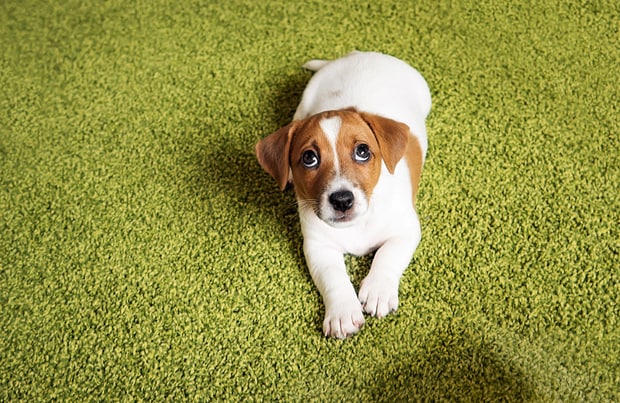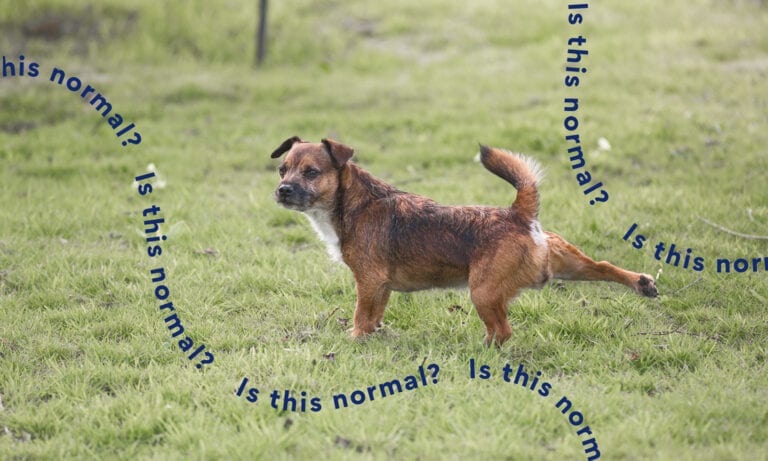You want to train your dog the right way, but how can you know what’s best when there’s so much conflicting information available? Is it okay to use treats, or is that bribery? And where does punishment fit into the training equation? The science of dog training has come a long way in the past 25 years, and while there are still dissenting opinions about the best way to train a dog, there are some lingering techniques that are outdated, unsafe and unkind.
The following methodologies do more harm than good and can damage the relationship you have with your dog:
Thinking You Have to be the “Alpha”
You’ve probably heard that in order to successfully train your dog you need to be the “alpha” of the relationship, and if you don’t assume that role it’s likely your dog will become “dominant.” The alpha-dog training concept came from flawed studies done on captive wolves in the 1940s which suggested that wolves compete with one another, sometimes violently, to gain “top dog” status within the pack and that the alpha role must be defended against frequent attacks by potential usurpers. The studies were debunked – captive wolves react differently than wild wolves, and more importantly, dogs aren’t wolves – but the alpha myth persists, and many a family dog has suffered because of it.
Gentle guidance, clear rules and appropriate rewards (more on that later) are much more effective when trying to form a respect-based relationship with your dog. Heavy handed techniques have no place in modern dog training because we’ve discovered that not only are they ineffective ways to teach, they also chip away at the bond you have with your dog. The fallout from using alpha techniques – like forcing your dog to roll on its side until it “submits” – can cause your dog to actually regress in training and exhibit signs of anxiety and greater reactivity. Positive, dog-friendly training can tackle everything from basic puppy manners to leash aggression while always taking the dog’s well-being into account. If you assume the role of benevolent leader and take the time to train your dog with kindness, you’ll have a mutually respectful relationship based in cooperation, not intimidation.
Skipping Treats During Training
Praise is an important element of your relationship with your dog but, when you’re training, it’s just not enough. People refute the use of dog treats by saying that it’s bribery, or a crutch, or that the dog should innately want to work for the handler without needing extra inducement. While it’s lovely to think that our presence and praise are enough to sufficiently motivate our dogs, the reality is that the most effective way to teach a dog something new is to use a primary reinforcer, or something the dog is born needing. For most dogs, that’s food.
The secret is using food the right way. Dogs learning something new require a great deal of feedback, so giving them frequent treats during the initial training stages will help cement the behavior. Once the dog understands the training concept, it’s important to wean him off of the treats and use them unpredictably, so your dog never knows when he’s going to be rewarded (dogs are innate gamblers, and the same principle that keeps humans at the slot machine will keep your dog in the training game). Using treats in this fashion prevents them from becoming a bribe, because you’re not showing your dog the treat in order to get him to perform a behavior, you’re getting the behavior you want from your dog and rewarding him for doing it. Using treats provides speedy results, and makes training fun for your dog.
Dogs are innate gamblers, and the same principle that keeps humans at the slot machine will keep your dog in the training game.
Using Pain to Train
Dogs are supposed to be our best friends, so it’s hard to understand why anyone would train with pain and intimidation. Old-school training relies heavily on compulsion and using equipment like choke chains, prong collars and shock collars to force the dog to obey. Proponents of this type of training claim that the collars aren’t painful. They say the sound of the choke chain produces the result, or that the prong collar’s “gentle pressure” mimics the way a mother dog corrects her young and keeps the dog in line. The shock of electric collars is explained away with euphemisms like “tap” and “tickle.” The reality, however, is that all of these types of equipment rely on pain to produce results. How can you tell? Put one of these collars on your neck and see how the chokes, pokes and shocks feel.
Aside from the ethical quandary of hurting your dog just to make him a better leash walker, you also should consider the potential fallout from using pain-based training techniques. Collars that compress the dog’s throat can cause a variety of injuries, from soft tissue damage to problems related to the eyes and spinal cord. Not only that, there are a variety of ancillary behavioral problems that can occur in conjunction with pain-based training, like increased fearfulness or aggression. Using pain-based training merely suppresses the dog’s reaction in that moment, it doesn’t teach the dog what it should do instead, which is key in bringing about long-term behavioral change.
Punishment in Potty Training
Puppies have a lot to learn in order to fit into our world, and the most important early lesson is figuring out where to potty. Dogs don’t come into our homes knowing the rules, particularly when it comes to elimination, and it’s our responsibility to teach them what works and what doesn’t. That’s why the outdated advice to rub the dog’s nose in his mess if he soils in the house or spank him if he has an accident is particularly distressing.
It takes time to help a puppy learn to go exclusively outside and, truth be told, we’re not always the best teachers. We miss the signs that our dogs need to go, we make them wait too long in between trips outside and we don’t reinforce their behavior when they do it right. We’re not flawless as we go through the potty training process, so why should we expect our puppies to be? Plus, punishing your puppy for indoor mistakes will not teach him where he needs to potty. It will only make him frightened of you and potentially less likely to potty anywhere near you because you act unpredictable and scary when you see a puddle or a pile.
The Best Way to Train: Rethinking the Approach
The theme in all of the outdated training techniques is disconnection, because the handler and dog aren’t working together in harmony to achieve training goals. Despite what history suggests, dog training shouldn’t be a dictatorship. We’ve figured out how dogs learn and have realized that the old methods of force and intimidation are inhumane. When training is done correctly, dogs are joyful participants, eager to embrace the challenges of learning new behaviors. The truest test of any training methodology is to ask yourself: “Is this the way I want to treat my best friend?”

Victoria Schade is a dog trainer, author & speaker who has contributed to The Washington Post, Martha Stewart, and other publications.
Share:









